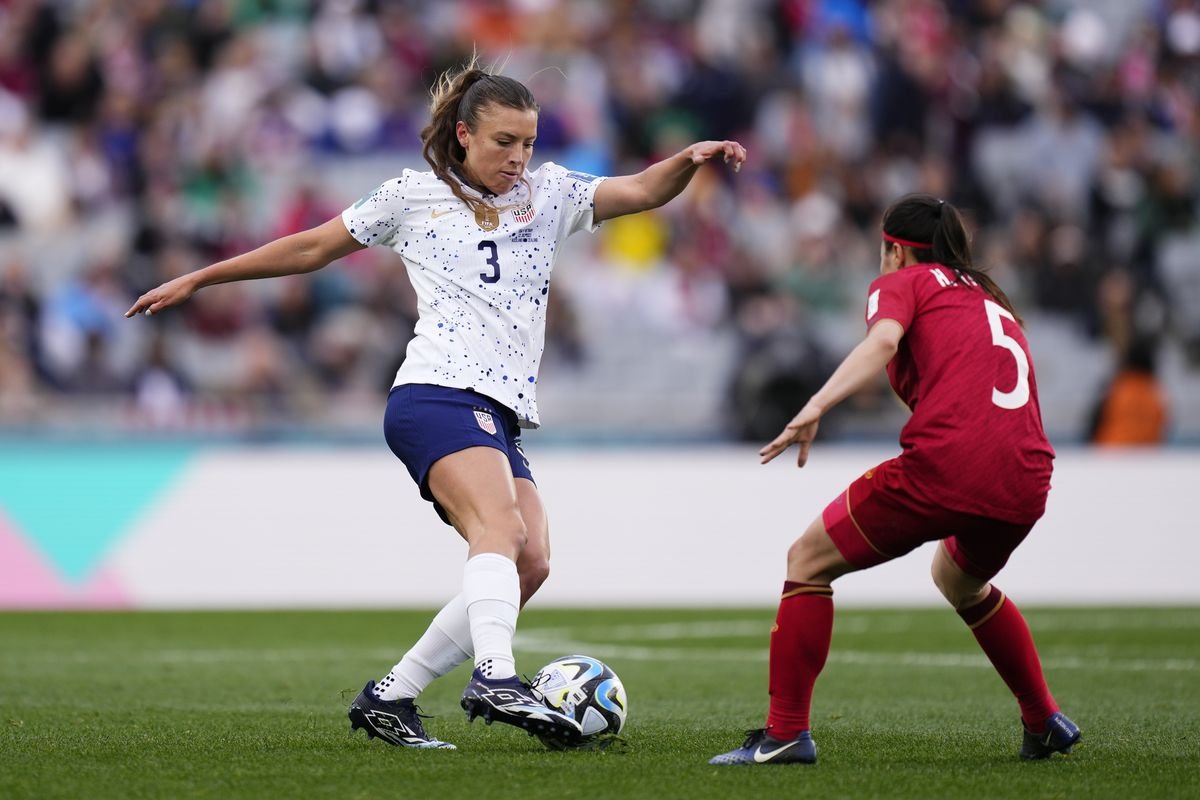As the final whistle blew at the 2023 Women’s World Cup, the world witnessed a magnificent display of skill, determination, and passion.
The tournament not only showcased the prowess of female athletes but also acted as a mirror reflecting the progress made in the realm of women’s sports.
The Women’s World Cup stands as a testament to the relentless efforts toward gender equality in sports and serves as a reminder of the work still to be done.
A Triumph of Talent
The 2023 Women’s World Cup was not just about the competition; it was about elevating women’s football to new heights.
The level of talent displayed by teams from around the world shattered stereotypes and reaffirmed that women’s sports are deserving of the same recognition, attention, and respect as their male counterparts.
The competition showcased that excellence knows no gender boundaries and that the thrill of the game remains unchanged, regardless of who is playing.

Challenging Gender Norms
Beyond the pitch, the Women’s World Cup 2023 confronted deeply ingrained gender norms that have historically hindered the growth of women in sports.
The athletes, coaches, and supporters broke through societal barriers, showing that women are not only capable of competing at the highest level but also deserve a platform equal to men.
The tournament boldly challenged notions of femininity and masculinity, illustrating that women can be fierce competitors while maintaining their individual identities.

Inspiring Future Generations
One of the most significant impacts of the Women’s World Cup lies in its ability to inspire future generations.
Young girls watching the tournament saw themselves represented on the global stage, realizing that their dreams of becoming professional athletes are attainable.
Representation matters, and the tournament has laid the foundation for a new wave of female athletes, coaches, and leaders who are unafraid to pursue their passions.

A Catalyst for Change
The Women’s World Cup 2023 also serves as a catalyst for broader changes in the sports industry.
The increased visibility of women’s sports challenges sports organizations, media outlets, and sponsors to invest more in women’s sports, bridging the glaring financial and infrastructural gaps that persist.
These investments can create a virtuous cycle, fostering further growth, talent development, and professional opportunities for female athletes.
Room for Progress
Despite the strides made, it is important to acknowledge that there is still much progress to be achieved.
Gender pay disparities, unequal media coverage, and limited representation in leadership roles remain significant issues that need to be addressed.
Read Also: Venezuela hosts Women’s Baseball Pre-World Championship
Additionally, cultural biases and societal expectations continue to create hurdles for women pursuing careers in sports.
The Women’s World Cup must not be a fleeting moment of empowerment but a stepping stone towards lasting change.
The 2023 Women’s World Cup stands as a historic event that not only showcased the incredible skill and passion of female athletes but also highlighted the progress made in the fight for gender equality in sports.

It shattered stereotypes, inspired generations, and laid the groundwork for a more inclusive and equitable future.
As we celebrate the successes of the tournament, let us remain steadfast in our commitment to dismantling barriers and creating a world where women’s participation in sports is not just celebrated but normalized.
History of Women in Sports
The history of women in sports is a testament to their resilience, determination, and perseverance in the face of social and cultural barriers.

Here’s a brief overview of the key milestones in the journey of women in sports:
Late 19th Century: Women’s involvement in sports was initially restricted due to prevailing beliefs that strenuous physical activity was harmful to their fragile constitutions.
However, in the late 19th century, women began participating in activities like tennis, golf, and archery, often in more socially acceptable settings.
Early 20th Century: The early 20th century marks the emergence of female athletes who pushed boundaries. The 1900 Paris Olympics featured women’s events, but participation was still limited.
Swimming, gymnastics, and track and field became increasingly popular among women.
1920s – 1930s: The 1928 Amsterdam Olympics marked a turning point with the introduction of women’s track and field events.
Despite growing interest and participation, societal norms still limited opportunities for women in sports.

1950s – 1960s: The 1950s saw an increase in women’s participation in sports, and the introduction of the contraceptive pill in the 1960s gave female athletes more control over their bodies and allowed them to compete without concerns about pregnancy.
1970s – Title IX and Beyond: The passage of Title IX in the United States in 1972 revolutionized women’s sports by prohibiting gender-based discrimination in educational programs, including athletics.
The 1972 Munich Olympics included the first official women’s basketball and handball tournaments.
Women’s sports gained momentum globally, and women started participating in more diverse disciplines.
1980s – 1990s: The 1980s and 1990s witnessed the emergence of female sports icons such as Martina Navratilova (tennis), Jackie Joyner-Kersee (track and field), and Mia Hamm (soccer).
Women’s World Cups were introduced in soccer and cricket, showcasing the popularity and talent of female athletes.
2000s – Present: The 21st century has seen continued growth in women’s sports, with events like the FIFA Women’s World Cup, the Women’s Six Nations (rugby), and the WNBA (basketball) gaining popularity.

Women’s participation in the Olympics has expanded, and there’s a growing recognition of the importance of equal opportunities and representation.
Despite these advancements, challenges persist, including pay disparities, unequal media coverage, and limited representation in leadership roles.
However, women in sports have made remarkable strides, breaking records, shattering stereotypes, and inspiring generations to come.
Their journey is a testament to the power of perseverance and the importance of creating a more inclusive and equitable sporting world.








